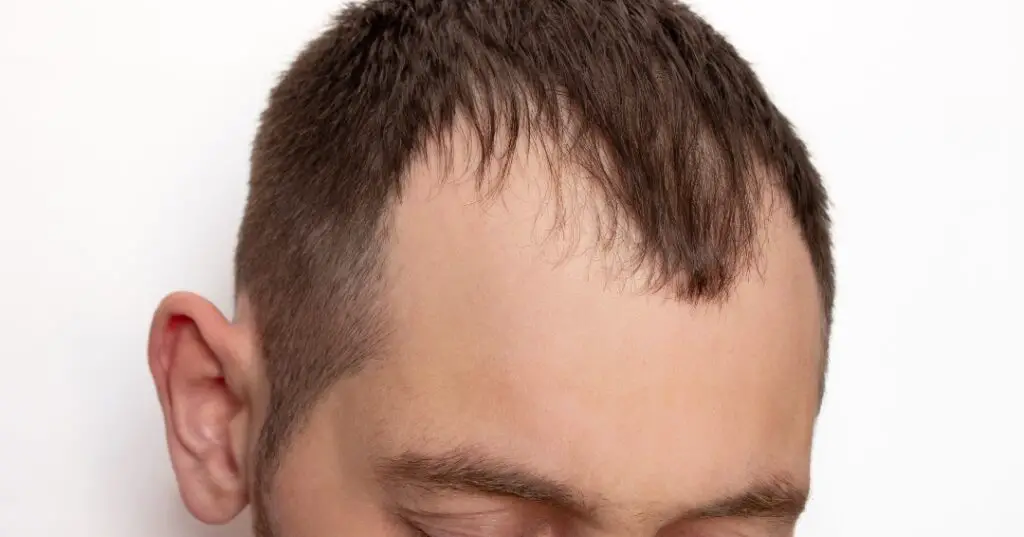Seborrheic dermatitis can be a frustrating skin condition, especially when it affects your hairline. This common issue causes red, flaky, and sometimes itchy patches on your scalp and face. When it appears along your hairline, it can be particularly noticeable and uncomfortable.
Treating seborrheic dermatitis of the hairline involves a mix of good hygiene and targeted treatments. You can manage this condition by using medicated shampoos, applying topical treatments, and making some lifestyle changes. These steps can help reduce symptoms and keep flare-ups under control.
Let’s explore some effective ways to treat this pesky skin problem, specifically when it affects your hairline.
What is the hairline?

The hairline is the edge of your hair growth where it meets your forehead. It’s the boundary between your scalp hair and facial skin.
Hairlines aren’t fixed. They can change over time due to age, genetics, or hair loss conditions. For men, the hairline often recedes as they get older. This is called a maturing hairline. Women’s hairlines typically stay more stable, but can thin out.
Your hairline is an important part of your appearance. It frames your face and can affect how you style your hair.
In seborrheic dermatitis, the hairline is a common trouble spot. The condition can cause redness, flaking, and itching along this border between hair and skin.
What is the difference between seborrheic dermatitis of the hairline and of the scalp or face?
Seborrheic dermatitis can affect different areas of your head, including the hairline, scalp, and face. While the condition is similar in these areas, there are some key differences.
Hairline seborrheic dermatitis often appears as reddish patches with greasy scales along the edge of your hair. It may extend slightly onto your forehead or behind your ears.
On the scalp, the condition typically causes flaking skin, known as dandruff. The flakes can be white or yellowish and may stick to your hair.
Facial seborrheic dermatitis commonly affects oily areas like the sides of your nose, eyebrows, and ears. It can cause red, scaly patches and sometimes mild swelling.
Treating Seb Derm of the hairline involves medications that you would usually use for the scalp and the face. I’ll go into more details later.
Why does seborrheic dermatitis affect the hairline?
Seborrheic dermatitis often targets the hairline due to the unique conditions found there. Your hairline has many oil-producing glands called sebaceous glands. These glands make an oily substance called sebum.
The excess sebum creates an ideal environment for a yeast called Malassezia to thrive. This yeast is naturally present on your skin, but it can overgrow in oily areas.
Your hairline is also prone to moisture and heat. These factors, combined with excess oil, create perfect conditions for seborrheic dermatitis to develop.
Your hairline is also exposed to hair products, sweat, makeup, and environmental factors. These can irritate the skin and contribute to the development of seborrheic dermatitis.
Seb Derm usually doesn’t only affect the hairline. Chances are you also have scalp Seb Derm and even elsewhere on your face or body.
How to treat seborrheic dermatitis of the hairline
As I mentioned before, the hairline is that special border between your scalp and your face. Therefore, you can use a multi-pronged approach to deal with hairline Seb Derm.
Anti-fungal cream

- Apply an antifungal cream to the skin part of your hairline. There is no need to go deeper into the scalp or hair area. These are the antifungal creams I recommend.
Anti-fungal shampoo

- Use over-the-counter anti-dandruff shampoos containing ingredients like selenium sulfide, ketoconazole, or zinc pyrithione. Massage these into your hairline and leave on for a few minutes before rinsing.
Lifestyle changes
I never talk about treatment without including lifestyle changes. Topical treatments are only one half of the equation. Without making sure you avoid potential triggers for Seb Derm, it’s sure to recur.
- Manage stress through relaxation techniques, as stress can trigger flare-ups.
- Avoid harsh hair products that may irritate your scalp. Use a gentle shampoo.
- Eat a balanced diet rich in vitamins and minerals to support skin health and your immunity.
What to avoid when you have seborrheic dermatitis of the hairline
While you’re treating your hairline with creams and shampoos, make sure you give your hairline a chance to heal. You do this by avoiding products and actions that can cause further insults:
- Avoid harsh shampoos and styling products. These can irritate your skin and make symptoms worse.
- Avoid scratching or picking at affected areas. This can lead to more inflammation and possible infection.
- Skip hot water when washing your hair. Hot water can strip natural oils and dry out your scalp, worsening the condition. Use lukewarm water instead.
- Don’t use oil-based hair products near your hairline. These can feed the yeast that contributes to seborrheic dermatitis.
- Avoid tight hairstyles that put pressure on your hairline. This includes ponytails, braids, and headbands.
- Stay away from hair dyes and chemical treatments during flare-ups. These can irritate your scalp further.
- Avoid using greasy lotions or creams on your hairline. They can clog pores and worsen symptoms.
Lastly, don’t ignore the condition. Leaving seborrheic dermatitis untreated can lead to more severe symptoms over time.
Pingback: Is Nizoral shampoo good for dandruff?